
Baba au Rhum with Chantilly
I was so anxious to bring you a classic sweet. Of those that you enjoy since you see it in the shop window, while it travels the route in the hands of those who serve it to you and give the first spoonful… How much happiness can bring us a sweet as simple and elegant as Baba au Rhum.
It is a sweet made with a very similar dough to brioche, very spongy texture, which is then dipped in syrup made with citrus fruits and rum until it is well impregnated to obtain a very juicy interior. Then we will brush it with an apricot nappage, which will give it that shiny look, and finish decorating with Chantilly cream. Is it or is it not a wonder?
Baba au Rhum origin.
Baba au rhum is an elaboration based on a cake of Polish and Russian origin, Babcia or Babuschka, which derives from the abbreviation Baba which means “grandmother”. Nothing to do with the fact that its denomination comes from Ali Baba thanks to the king’s love for stories…
The king of Poland Estanislao I Leszczynski, known for his taste for pastry, also Duke of Lorraine (France) where he resided from 1737 to 1766, introduced this cake in France with his pastry chef Nicolas Stohrer. The recipe was a combination of kugelhopf (very traditional in Alsace) and an addition of Malaga wine and pastry cream.
The descendants of the Leszczynski family used to serve it always dry accompanied by a gravy boat full of Malaga wine reduced with tanning water.
The success of baba au rhum was such that the renowned bakers from France began to elaborate a similar recipe with their personal touches. Marie-Antoine Carême called it baba a la polonaise in 1815.
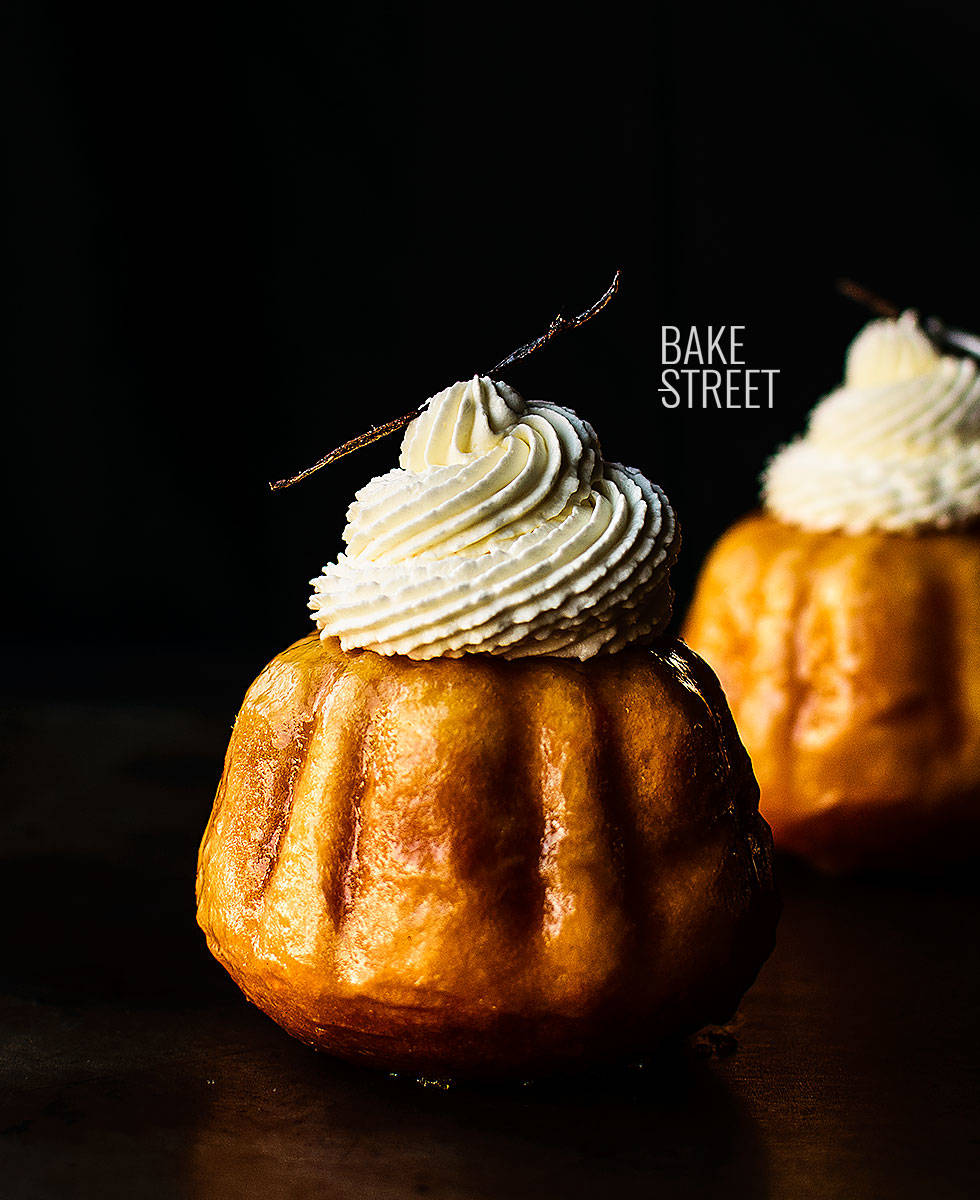
Baba evolution.
The recipe described in the“Dictionnaire Général de la Cuisine Francaise Ancienne et Moderne”, which dates back to 1853, was made with raisins, candied fruit, Malaga wine and saffron. In that same year, the Parisian pastry chef Stohrer, descendant of King Stanislaus’ pastry chef, decided to replace the wine with rum.
In 1844 the Julien brothers, Parisian confectioners, invented the Savarin. An elaboration based, and highly influenced, on baba au rhum. It differs from this one in its syrup, it was made with Kirsch, absinthe and rose water, which was a real innovation. They also differed in the pan used, the savarin was cooked in a ring shaped round mould as opposed to the baba au rhum made in a simple round pan. Nowadays, the ring shape is associated with baba.
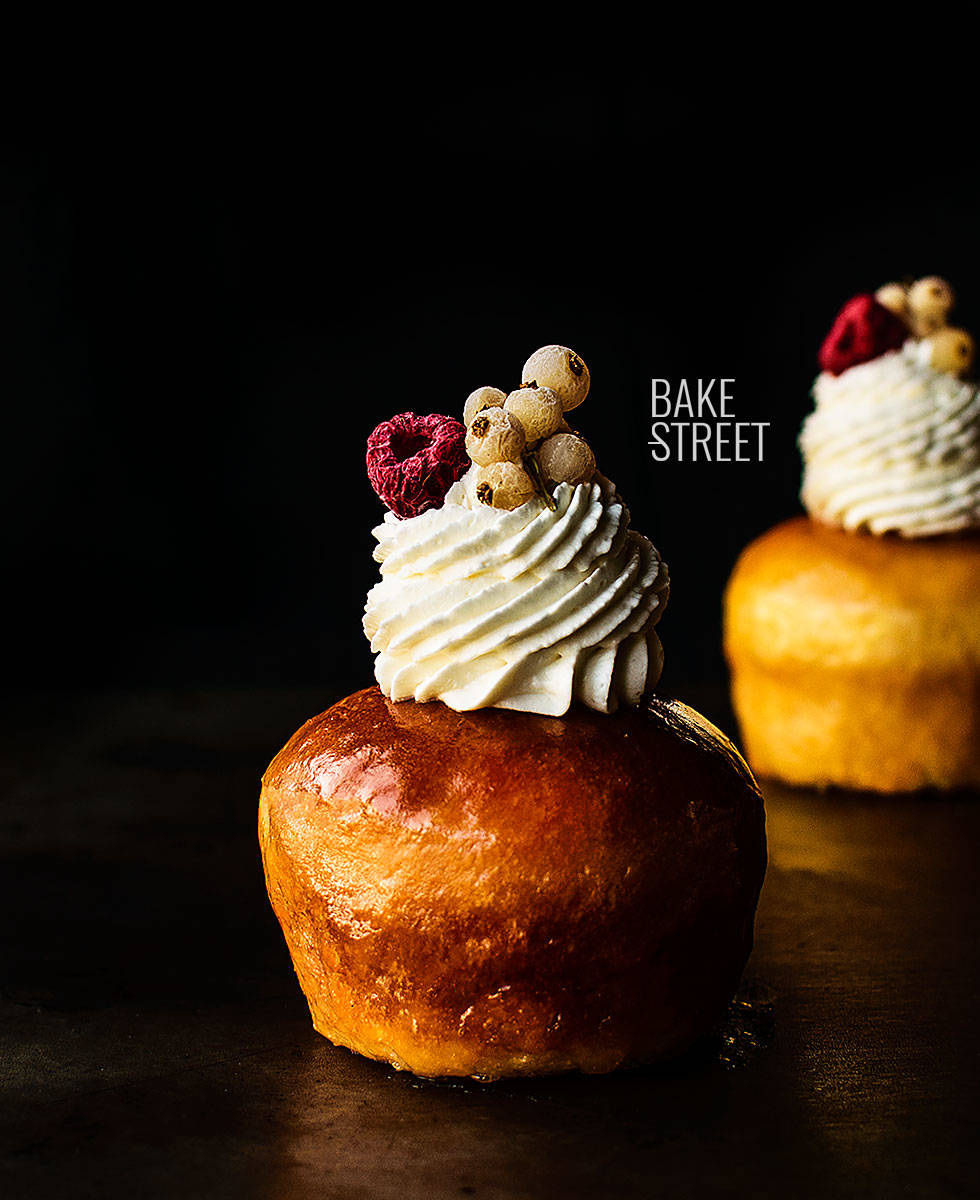
The voyage of the baba au rhum.
At the beginning of the 19th century this sweet crossed the Alps with Joachim Murat (King of Naples and Marshal of France) on his way to Italy. The Neapolitans welcomed this sweet until they made it theirs. At the beginning, this cake was only available to high society, but after the unification of Italy, it became popular and began to have a presence in bakeries.
And today he continues on his way to your homes so that you can elaborate it with your own hands and give it your own personal touch. I leave you a recipe that I have taken from the great Cyril Lignac, a pastry chef that if you didn’t know until now, I recommend you to follow very closely.

I’ve been very musical for a few weeks and when I was editing the photos and this song was playing in the Spotify I thought… – eh, it’s perfect for this recipe! So I decided to share it with you too. A wonder for the senses of Molly Johnson “Miss Celie´s Blues“.
Ingredients for 6-8 pieces
FOR THE DOUGH:
- 7 oz (200 g) T45 flour or bread flour
- 1 oz (30 g) sugar
- 2 large eggs, about 4,2 oz (120 g)
- 0,12 oz (3,5 g) dried yeast + 0,35 oz (10 g) water
- 2,1 oz (60 g) unsalted butter at room temperature
- 0,14 oz (4 g) salt
FOR THE SYRUP:
- 18,35 oz (520 g) water
- 8,1 oz (230 g) sugar
- one orange peel
- one lemon peel
- 1 tsp vanilla paste
- 4,35 oz (120 g) rum
FOR APRICOT NAPPAGE:
- 5,65 oz (160 g) apricot jam
- 2 gelatin sheets, about 0,11 oz (3,3g)
FOR CHANTILLY:
- 7 oz (200 g) cream
- 1,75 oz (50 g) icing sugar
- few drops of vanilla extract
Instructions
Make the dough.
- In a glass dissolve the dried yeast in water, set aside.
- In the bowl of the stand mixer add the flour together with the sugar and eggs.
- Knead with the hook at low speed until a homogeneous mixture is obtained.
- Add the dissolved yeast and knead for about 5 minutes.
- Add the salt and mix again until it has been integrated into the dough.
- Finally add the butter, do it in 2-3 batches and wait until the first part is completely integrated before adding the next one.
- Once we have added all the butter, knead for about 10-12 minutes. We must obtain a soft and elastic dough.
- Make a ball with the dough, put it in a bowl and let rise until it doubles in size. In my case it took 3 1/2 hours at 69ºF (20,4ºC).
Shape the buns.
- Grease the pan with butter, sprinkle with flour and remove the excess. Set aside.
- place the dough over a clean work surface and degass it gently.
- Divide the dough into 8 equal pieces, about 1,75 - 1,95 oz (50-55 g). In my case I made 2 larger baba 3,5 oz (100 g)/piece and 4 small.
- Shape each piece, remember that if there are leftover from the dough, we will place them in the center of each piece before shaping.
- Place the dough pieces in the pan, cover with film and let them rise until they double (or even slightly larger) in size. In my case it took 3 hours at 71,6ºF (22ºC).

Make the syrup.
- In a medium saucepan pour the water and place it in a medium heat. Let it take a little temperature, but not boiling.
- Add the sugar together with the citrus peels and vanilla. Let it boil, reduce to medium low heat and cook for 10 minutes.
- Remove from the heat, pour the rum and let it infuse.
Bake.
- Preheat the oven to 355ºF (180ºC).
- Introduce the pans at medium height and bake the small ones for 15 minutes and big ones for 23 minutes. They will take a nice golden color on the surface.
- While they are baking, warm the syrup without boiling.
- Remove them from the oven and from the pan. Place over a rack.
Dip in the syrup.
- Strain the syrup to remove the citrus peels and pour into a bowl.
- Dip the baba in the syrup, we will help them to submerge by pressing them gently. They must absorb enough syrup, in fact, you'll notice by their weight.
- Place on a rack and dip the following.
- Let them cool completely.
Make the nappage.
- Moisturize the gelatin sheets in very cold water (from the fridge), let them stand submerged for 20 minutes.
- In a saucepan add the apricot jam. Place it in medium heat and let it reach 122º-131ºF (50º-55ºC).
Remove from the heat. - Drain the gelatine very well and add it to the jam. Mix to dissolve completely.
- Let the mixture lower its temperature to 113ºF (45ºC) and brush the surface of the babas.
Make chantilly.
- Pour heavy cream into freeze bowl and beat with an electric mixer into slow speed.
- Once cream is becoming to form stiff peaks, add sugar little by little stirring the whole time. Increase speed gradually but without reaches high one. Ideally use medium speed.
- Before finish to beat the cream, add vanilla extract and beat until get a perfect whipping cream. Be sure not to over-beat, otherwise cream will become lumpy and butter-like.
- Cover with plastic wrap and place in the fridge until used it.
Decorate baba au rhum.
- Introduce the chantilly in a pastry bag with star tip and decorate.
- Optionally you can sprinkle dried fruits, decorate with fruit or a piece of vanilla pod.
- Serve.

Notes
- I have used two types of pan to make them. A muffin tray and 3,95 inch (10 cm) individual pans.
- A metal or silicone pan can be used to make them. But, if you want them to acquire a golden color by the surface I recommend you to use metal pans.
- Leave them in the syrup for a while and turn them upside down from time to time to make sure that they are impregnated all over the surface. Otherwise the central part will be dry.
- The gelatin to make the nappage must be hydrated in very cold water. If you do it in water at room temperature, the gelatin will dissolve instead of hydrating.

- Before make whipped cream we must know: Cream must be cold 24 hours before used it. The bowl in which we are going to make whipped cream must be cold. I recommend to use one aluminium bowl and freeze 20 minutes before beat it.

- The decoration can be of your choice, from a vanilla pod, raspberries, currants, dried fruits or even some more exotic fruit.
- Once assembled, we can keep them in the refrigerator for a couple of days (if they have cream in them) and for 3-4 days (if they are not decorated with cream).

If you like traditional, simple but elegant sweet treats, try this Baba au Rhum. I'm sure you'll fall in love with it if you have not already done so.
If you will allow me, I will retire to my chamber to enjoy one of these delicacies along with a cup of coffee. Have a wonderful day.
Big hugs,
Eva
Sources: Le guide des Connaisseurs, Wikipedia.

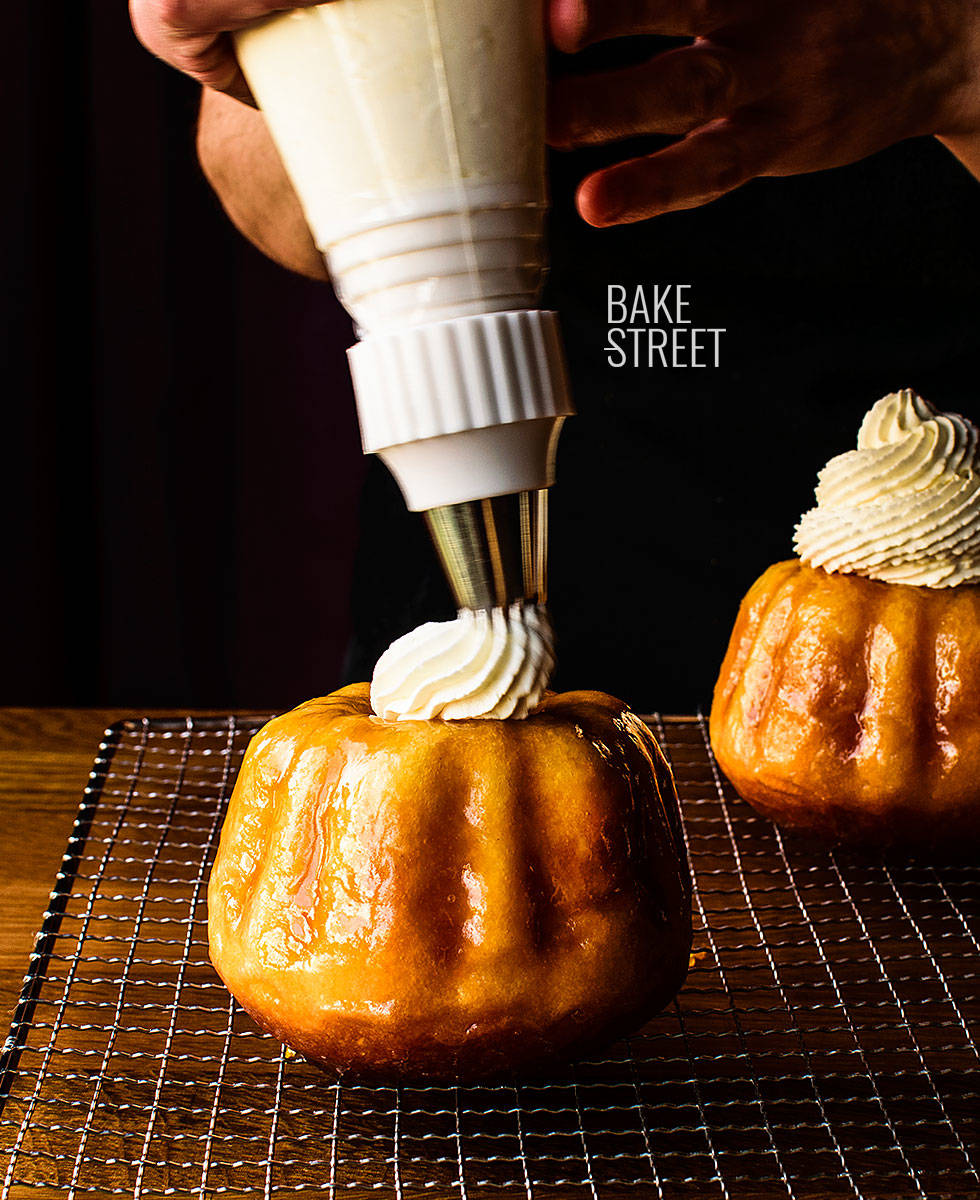
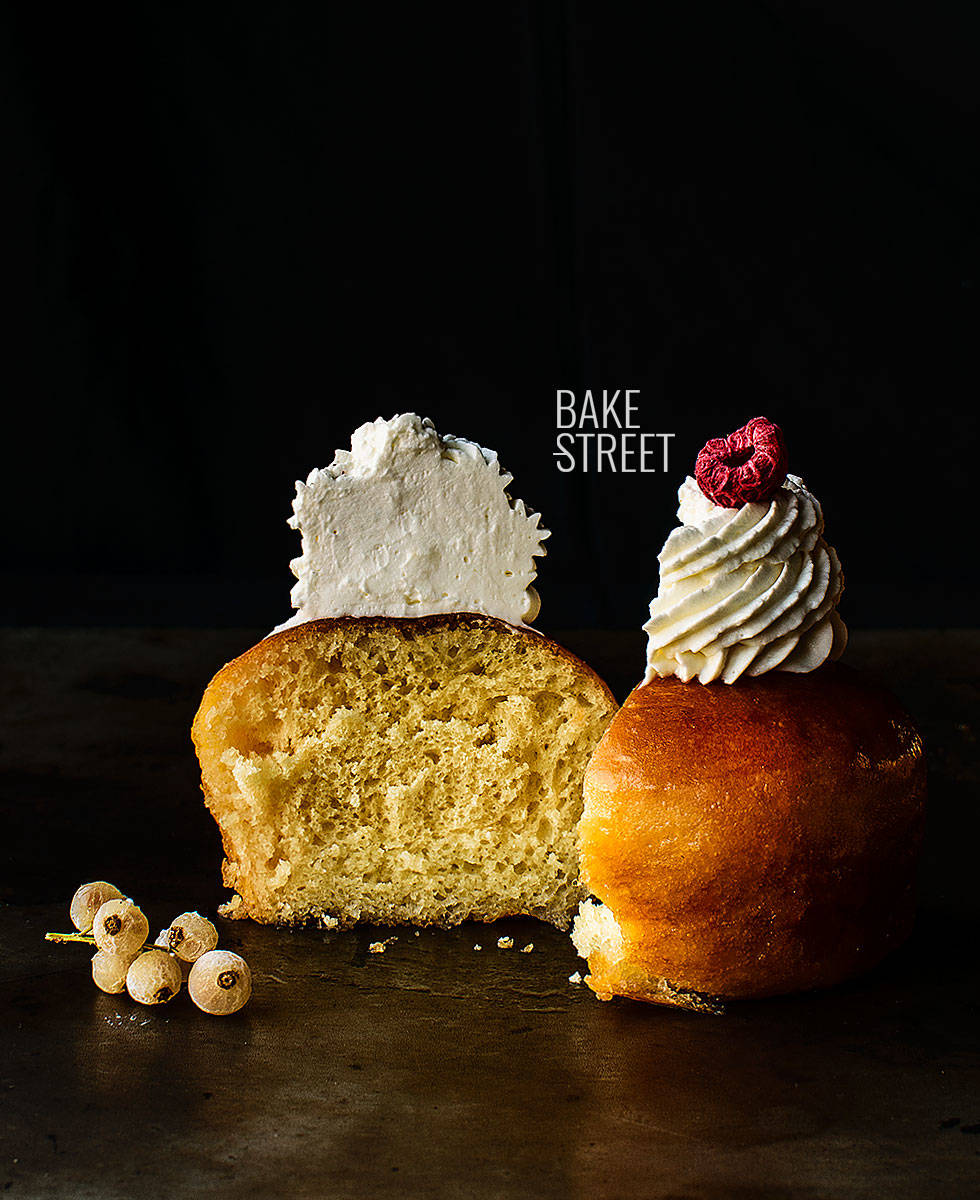
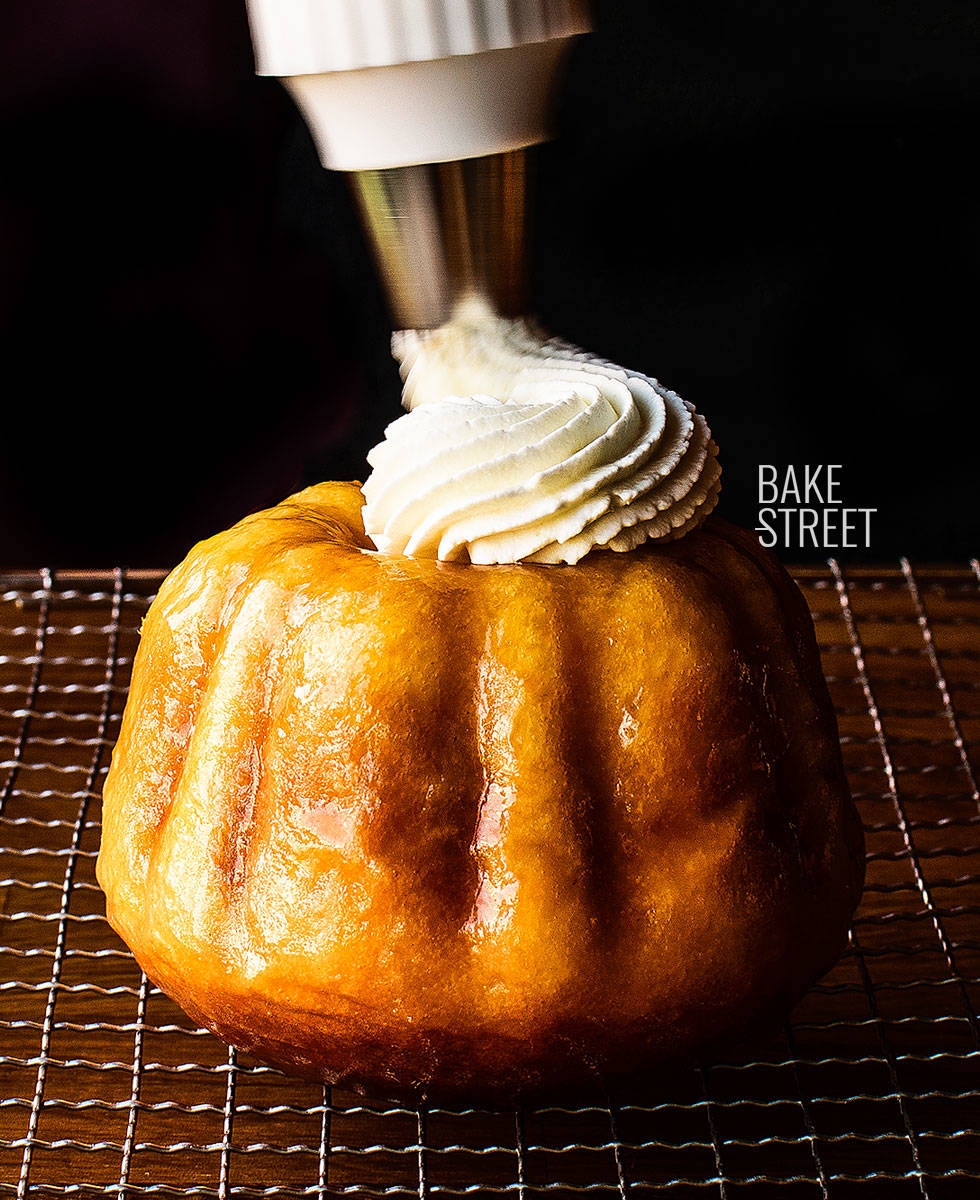


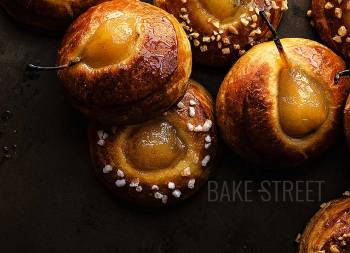
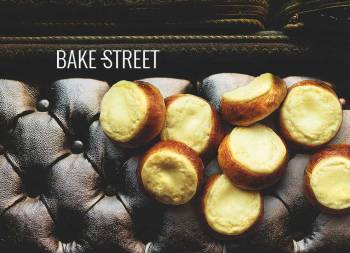
Comentarios